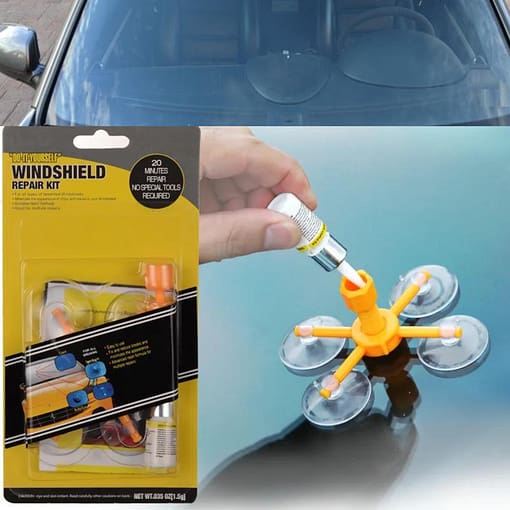So, you’ve poured your heart and soul into your DIY blog or website, sharing your creative projects and ideas with the world. But now you’re wondering, how can you turn all your hard work into a source of income? In this article, we’ll explore some effective strategies that will help you monetize your DIY blog or website, allowing you to not only share your passion but also make some extra cash while doing it. From sponsored posts to affiliate marketing, let’s dive into the world of money-making opportunities for your DIY platform and answer the question of How Do I Make Money From My DIY Blog Or Website?
1. Affiliate marketing
Affiliate marketing is a popular and effective way to monetize your DIY blog or website. By becoming an affiliate for certain products or services, you can earn a commission for every sale that is made through your unique affiliate link. Here are some key steps to successfully leverage affiliate marketing:
1.1 Choosing affiliate programs
One of the first steps in affiliate marketing is selecting the right affiliate programs to join. Look for programs that align with your niche and target audience. Consider factors such as commission rates, cookie duration, and the reputation of the brand or company. It’s also important to choose affiliate programs that offer products or services that you genuinely believe in and would recommend to your readers or followers.
1.2 Creating engaging content with affiliate links
Once you have chosen the affiliate programs you want to work with, it’s time to create high-quality and engaging content that incorporates your affiliate links. Be strategic in how you place and promote these links within your content. Rather than using generic anchor text like “click here,” opt for more specific and enticing calls-to-action that encourage your readers to take action.
1.3 Promoting products through reviews and tutorials
Reviews and tutorials are powerful ways to showcase the benefits and features of the products or services you are promoting through affiliate marketing. Create in-depth and honest reviews that highlight the pros and cons, as well as personal experiences and opinions. Tutorials can demonstrate how to use the product or service effectively, providing added value to your audience.
1.4 Optimizing affiliate links placement
The placement of your affiliate links can greatly impact the click-through rates and conversions. Experiment with different positions and formats to find what works best for your audience. Consider placing affiliate links within the body of your content, in sidebars, or even in call-to-action buttons. Always make sure that the placement feels natural and non-intrusive to maintain a positive user experience.
1.5 Tracking and analyzing affiliate performance
Tracking and analyzing the performance of your affiliate links is crucial for optimizing your monetization efforts. Utilize affiliate tracking software or platforms to monitor the clicks, conversions, and revenue generated by each affiliate link. This data will provide valuable insights into which products or promotions are most effective, allowing you to make informed decisions for future affiliate marketing campaigns.
2. Sponsored content and brand partnerships
Another way to generate income from your DIY blog or website is through sponsored content and brand partnerships. By collaborating with brands that align with your niche and audience, you can create sponsored posts, videos, or other forms of content that promote their products or services. Here are the key steps to effectively leverage sponsored content and brand partnerships:
2.1 Developing a strong brand and online presence
Before brands will consider partnering with you for sponsored content, it’s important to establish a strong brand and online presence. This includes consistently creating high-quality content, engaging with your audience through social media and comments, and building a reputation as an authority in your niche. Brands are more likely to work with bloggers or website owners who have a dedicated and engaged following.
2.2 Pitching to brands and negotiating partnerships
When approaching brands for potential partnerships, it’s essential to craft a compelling pitch that highlights the value you can bring to their business. Describe your audience demographics, engagement rates, and any previous successful collaborations. Be clear about what you can offer in terms of sponsored content formats and promotion methods. Negotiate fair compensation based on the value you are providing.
2.3 Creating high-quality sponsored content
Once you have secured a brand partnership, it’s crucial to create high-quality sponsored content that seamlessly integrates the brand’s message. Maintain transparency with your audience by clearly indicating that it is a sponsored post or collaboration. Focus on creating content that is valuable, informative, and entertaining for your audience, while still highlighting the brand’s products or services in an authentic way.
2.4 Maintaining transparency and authenticity
Transparency and authenticity are key when it comes to sponsored content and brand partnerships. Always disclose any relationships or compensated collaborations to your audience so they understand that they are seeing sponsored content. It’s important to maintain the trust of your readers or followers by providing honest opinions and recommendations, even if you are being compensated for promoting a particular brand.
2.5 Building long-term relationships with brands
Building long-term relationships with brands is beneficial for both parties involved. Continuously deliver high-quality sponsored content that aligns with your brand and your audience’s interests. Show your commitment to the brand’s success by promoting their products or services beyond the sponsored content. Building strong relationships can lead to repeat collaborations and even exclusive partnership opportunities.
3. Display advertising To Make Money From Your DIY Blog Or Website
Display advertising involves monetizing your DIY blog or website by displaying ads from ad networks. Here are the key steps to effectively leverage display advertising:
3.1 Choosing the right ad networks
When it comes to display advertising, choosing the right ad networks is crucial. Research and evaluate different ad networks based on factors such as ad relevancy, payment terms, and user experience. Ad networks like Google AdSense, Media.net, and Sovrn are popular options for bloggers and website owners. Consider the requirements and guidelines of each ad network before applying.
3.2 Optimizing website design for ad placements
To maximize the effectiveness of display advertising, optimize your website design to accommodate ad placements. Consider integrating ad spaces within your content, on sidebars, or in the header or footer sections of your website. Ensure that the ad placements do not disrupt the user experience and are strategically placed to capture the attention of your audience.
3.3 Balancing user experience and ad revenue
When incorporating display advertising, it’s important to strike a balance between generating ad revenue and maintaining a positive user experience. Too many ads or intrusive placements can negatively impact your audience’s experience, potentially leading to increased bounce rates or lower engagement. Be mindful of how ads are displayed and ensure they do not overshadow your content.
3.4 Implementing ad management tools
To streamline the management of your display ads, consider implementing ad management tools. These tools can help you track and optimize your ad performance, rotate ads to prevent ad fatigue, and provide detailed analytics on revenue and click-through rates. Popular ad management tools include Google Ad Manager, AdRotate, and Advanced Ads.
3.5 Tracking and analyzing ad performance
Tracking and analyzing the performance of your display ads is essential for optimizing your monetization strategy. Use the analytics provided by your ad network or ad management tools to monitor metrics such as impressions, click-through rates, and revenue generated. This data can help you identify trends, optimize ad placements, and make informed decisions to maximize your ad revenue.
4. Selling digital products
Selling digital products is a lucrative way to monetize your DIY blog or website. Digital products can range from e-books, online courses, design templates, or music downloads. Here are the key steps to effectively sell digital products:
4.1 Identifying market demand for digital products

Before creating and selling digital products, it’s important to identify the market demand for your chosen niche. Conduct market research to determine if there is a target audience willing to purchase your digital products. Look for gaps in the market or areas where you can offer unique value or expertise.
4.2 Creating valuable and unique digital products
To succeed in selling digital products, focus on creating valuable and unique offerings that meet the needs of your target audience. Develop comprehensive e-books, online courses, or design templates that provide practical solutions or teach valuable skills. Ensure that your digital products are professionally designed and well-presented.
4.3 Setting up an e-commerce platform
To sell digital products effectively, you’ll need to set up an e-commerce platform on your blog or website. Consider using platforms like Shopify, WooCommerce, or Gumroad, which provide easy-to-use tools for creating product listings, handling transactions, and managing customer orders. Customize your e-commerce platform to align with your branding and enhance the user experience.
4.4 Marketing and promoting digital products
Effective marketing strategies are essential for selling digital products. Utilize various channels such as social media, email marketing, and content marketing to promote your digital products to your target audience. Create compelling product descriptions, visually appealing graphics, and engaging promotional materials to entice potential customers.
4.5 Delivering excellent customer support
Providing excellent customer support is crucial for building a positive reputation and encouraging repeat sales. Respond promptly to customer inquiries or issues and offer solutions to ensure customer satisfaction. Consider offering additional resources or bonuses to enhance the value and customer experience of your digital products.

5. Offering online courses and workshops
Offering online courses and workshops is a highly profitable way to monetize your DIY blog or website. Educate and empower your audience by sharing your expertise through comprehensive online courses. Here are the key steps to effectively offer online courses and workshops:
5.1 Identifying a profitable niche and target audience
Before developing online courses, identify a profitable niche and target audience that are seeking the knowledge or skills you can provide. Conduct market research and competitor analysis to ensure there is demand for the topics you wish to teach. Consider targeting specific demographics or industries to narrow down your niche.
5.2 Developing comprehensive course content
Create comprehensive course content that covers all relevant aspects of your chosen topic. Structure your content into modules or lessons that are easy to follow and understand. Consider incorporating multimedia elements such as videos, downloadable resources, and quizzes to enhance the learning experience.
5.3 Choosing the right course platform
Selecting the right course platform is essential for delivering online courses effectively. Platforms like Teachable, Thinkific, or Udemy provide user-friendly interfaces and course management tools. Evaluate different platforms based on their features, customization options, pricing, and marketing capabilities to find the ideal platform for your courses.
5.4 Marketing and promoting online courses
A strong marketing strategy is crucial for attracting enrollments to your online courses. Utilize various marketing channels such as social media, email marketing, and content marketing to reach your target audience. Create engaging and informative promotional materials, including videos, blog posts, social media campaigns, or webinars, to showcase the value and benefits of your courses.
5.5 Engaging and supporting course participants

Ensuring a positive learning experience for your course participants is vital for customer satisfaction and repeat enrollments. Engage with your participants through discussion forums, live Q&A sessions, or email support. Provide ongoing value by offering additional resources, updates to course materials, or exclusive perks for your course alumni.
6. Creating and selling physical products
Creating and selling physical products can be a fulfilling and profitable way to monetize your DIY blog or website. From handmade crafts to branded merchandise, here are the key steps to effectively create and sell physical products:
6.1 Researching market demand and competition
Before diving into creating and selling physical products, conduct thorough market research to identify the demand and competition in your chosen niche. Understand your target audience’s preferences, pricing expectations, and purchasing habits. Look for unique selling points or gaps in the market that you can leverage.
6.2 Designing and manufacturing quality products
Design your physical products with a focus on quality, functionality, and aesthetics. Whether it’s apparel, home decor items, or DIY supplies, ensure that your products are visually appealing and of high quality. Consider sourcing manufacturers or suppliers that align with your values and provide consistent product quality.
6.3 Setting up an online store or using e-commerce platforms
To sell physical products, set up an online store on your blog or website. Utilize e-commerce platforms like Shopify, WooCommerce, or Etsy to showcase and sell your products. Customize your store to reflect your branding and optimize the user experience. Ensure that your store is mobile-friendly and offers secure payment options.
6.4 Creating compelling product descriptions and visuals
To attract potential buyers, create compelling product descriptions and visuals that highlight the unique features and benefits of your products. Use high-quality images, detailed descriptions, and customer reviews to provide an accurate representation of your products. Consider leveraging storytelling techniques to create an emotional connection with your audience.
6.5 Fulfilling orders and providing exceptional customer service
Efficiently fulfill orders and provide exceptional customer service to ensure customer satisfaction and loyalty. Streamline your order fulfillment process by integrating order management systems or fulfillment services. Communicate with your customers promptly, address their inquiries or issues, and go above and beyond to provide a positive buying experience.
7. Offering coaching or consulting services
If you have specialized knowledge or skills in a particular area, offering coaching or consulting services can be a lucrative way to monetize your DIY blog or website. Here are the key steps to effectively offer coaching or consulting services:
7.1 Identifying your area of expertise and target clients
Identify your area of expertise and determine the specific knowledge or skills you can offer through coaching or consulting services. Define your target clients based on their needs, industry, or demographics. Clearly articulate the value you can provide and how you can help your clients overcome challenges or achieve their goals.
7.2 Defining your coaching or consulting packages
Develop well-defined coaching or consulting packages that outline the specific services you offer and the outcomes clients can expect to achieve. Structure your packages based on different levels of engagement, duration, or access to additional resources or support. Clearly communicate the benefits and deliverables of each package to attract potential clients.
7.3 Building credibility and demonstrating expertise
Building credibility and demonstrating your expertise is essential for attracting clients to your coaching or consulting services. Leverage your blog or website by consistently creating high-quality and informative content that showcases your knowledge and experience. Share case studies, client testimonials, or certifications to establish your credibility in your chosen niche.
7.4 Marketing and promoting your coaching services
Effective marketing and promotion are crucial for attracting clients to your coaching or consulting services. Utilize various channels such as social media, email marketing, or networking events to reach your target audience. Develop informative and persuasive marketing materials that clearly communicate the benefits of your coaching or consulting services.
7.5 Providing valuable and personalized guidance
To deliver exceptional coaching or consulting services, provide valuable and personalized guidance to your clients. Tailor your approach to meet their specific needs and goals. Offer ongoing support, feedback, and accountability to ensure their progress and success. Continuously improve your skills and knowledge to stay ahead in your respective field.
8. Hosting webinars and virtual events
Hosting webinars and virtual events can be an effective way to engage and monetize your DIY blog or website. Webinars provide opportunities to share valuable knowledge, connect with your audience, and promote your products or services. Here are the key steps to effectively host webinars and virtual events:
8.1 Selecting engaging topics and themes
Choose engaging topics and themes for your webinars and virtual events that align with your expertise and audience’s interests. Research trending or popular topics within your niche and consider the pain points or challenges your audience faces. Craft compelling titles and descriptions that generate curiosity and entice participation.
8.2 Choosing the right webinar platform
Selecting the right webinar platform is crucial for hosting successful virtual events. Platforms like Zoom, Webex, or GoToWebinar provide features such as screen sharing, chat functions, and audience interaction tools. Consider the number of participants you expect, the level of engagement required, and the ease of use when choosing a webinar platform.
8.3 Promoting webinars and driving attendance
Effective promotion and marketing are key to driving attendance to your webinars and virtual events. Utilize various marketing channels such as email marketing, social media campaigns, blog posts, or collaborations with influencers to spread the word. Create engaging promotional materials and convey the unique value and benefits participants will gain from attending.
8.4 Delivering high-quality and interactive presentations
Deliver high-quality and interactive presentations during your webinars and virtual events to keep your audience engaged. Prepare well in advance, create visually appealing slides, and rehearse your content. Incorporate interactive elements such as polls, Q&A sessions, or live demonstrations to involve your audience and encourage participation.
8.5 Following up with attendees and nurturing relationships
Following up with attendees after your webinars or virtual events is vital for nurturing relationships and maximizing monetization opportunities. Send personalized thank-you emails, provide additional resources, or offer exclusive offers to attendees. Encourage feedback and engagement to continue building relationships and enticing participants to further engage with your blog or website.
9. Offering premium memberships or subscriptions
Offering premium memberships or subscriptions can provide a recurring source of income for your DIY blog or website. By offering exclusive content or benefits to paying members, you can build a loyal community while generating revenue. Here are the key steps to effectively offer premium memberships or subscriptions:
9.1 Creating exclusive content and benefits for members
To attract paying members, create exclusive content and benefits that provide additional value beyond what is freely available on your blog or website. This can include premium articles, tutorials, downloadable resources, video content, or access to a private community. Ensure that the exclusive content is unique, valuable, and aligned with your audience’s interests.
9.2 Setting up a membership or subscription platform
Choose a membership or subscription platform that meets your needs and integrates seamlessly with your blog or website. Platforms like MemberPress, Patreon, or Substack provide tools for managing memberships, securing content access, and processing payments. Customize the platform to reflect your branding and ensure that the user experience is intuitive and user-friendly.
9.3 Marketing and promoting premium memberships
Marketing and promotion are essential for driving memberships or subscriptions to your premium offering. Utilize various channels such as email marketing, social media, or exclusive discounts to entice your audience to become paying members. Clearly communicate the benefits and value they will receive by joining your premium membership or subscription.
9.4 Providing ongoing value and engagement to members
To retain and satisfy your paying members, consistently provide ongoing value and engagement. Regularly create and release exclusive content or benefits to keep members excited and motivated to continue their membership or subscription. Engage with your members through VIP communities, Q&A sessions, or monthly newsletters to foster a sense of community and build loyalty.
9.5 Maintaining a positive and supportive community
Creating and maintaining a positive and supportive community is crucial for the success of your premium memberships or subscriptions. Foster a sense of belonging by encouraging member interaction and participation through comment sections, forums, or private groups. Be responsive to member inquiries or feedback, and actively moderate to ensure a safe and respectful environment.
10. Monetizing through sponsored social media posts
Sponsored social media posts can be a lucrative way to monetize your DIY blog or website if you have a strong social media following. By collaborating with brands and promoting their products or services on your social media platforms, you can earn income through sponsored content. Here are the key steps to effectively monetize through sponsored social media posts:
10.1 Growing a strong social media following
Before monetizing through sponsored social media posts, focus on growing a strong and engaged social media following. Utilize various strategies such as posting consistent and high-quality content, engaging with your audience, utilizing relevant hashtags, or collaborating with influencers in your niche. Build a loyal following that trusts your recommendations and opinions.
10.2 Connecting and collaborating with relevant brands
Connect and collaborate with relevant brands that align with your niche and audience. Research brands that are open to sponsored collaborations with bloggers or website owners. Reach out to them with a compelling pitch, highlighting your social media reach, engagement rates, and the potential value you can provide through promoting their products or services.
10.3 Crafting compelling sponsored social media posts
Craft compelling sponsored social media posts that seamlessly blend the brand’s message with your own unique style and voice. Maintain transparency with your audience by clearly indicating that it is a sponsored post. Focus on creating authentic and engaging content that highlights the benefits and features of the brand’s products or services.
10.4 Maintaining authenticity and integrity
Maintaining authenticity and integrity is essential when monetizing through sponsored social media posts. Only collaborate with brands or products that you genuinely believe in and would recommend to your audience. Be transparent about any compensated collaborations and always provide honest opinions and recommendations, even if you are being paid to promote a particular brand.
10.5 Analyzing the effectiveness of sponsored posts
Analyze the effectiveness of your sponsored social media posts by tracking metrics such as engagement rates, click-through rates, and conversions. Evaluate which brand collaborations and content formats are most successful in terms of generating interest and revenue. Use this data to optimize future sponsored posts and focus on collaborations that resonate with your audience.














